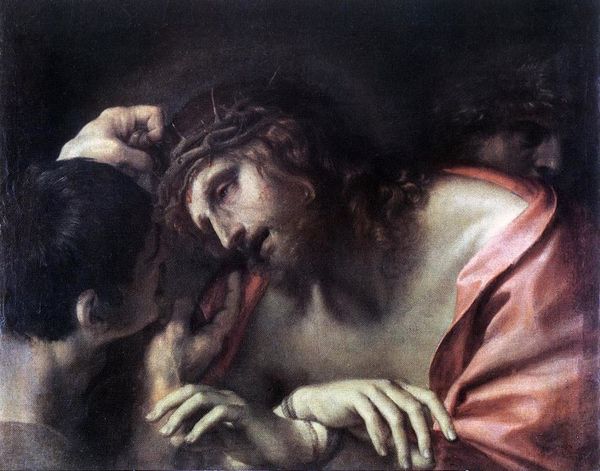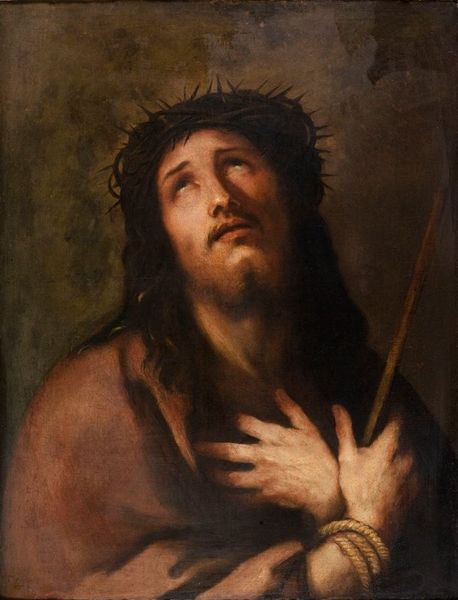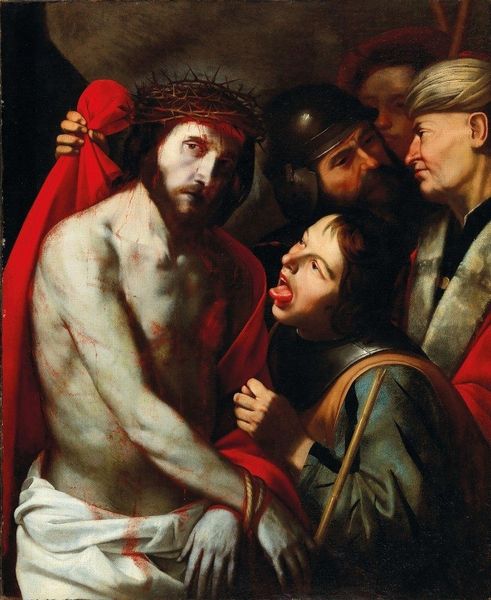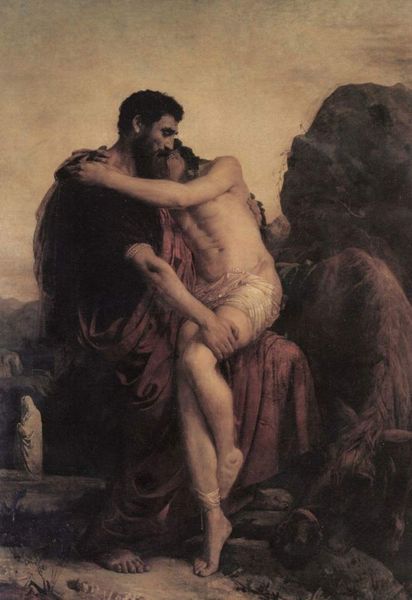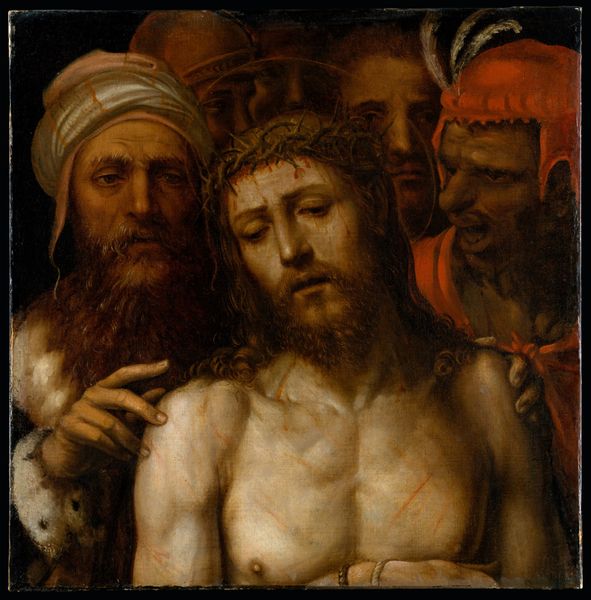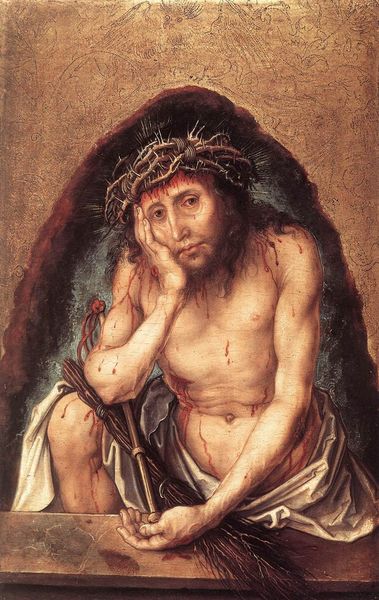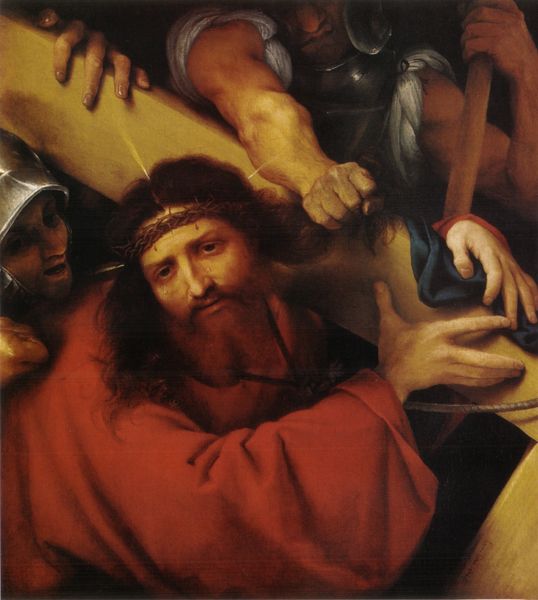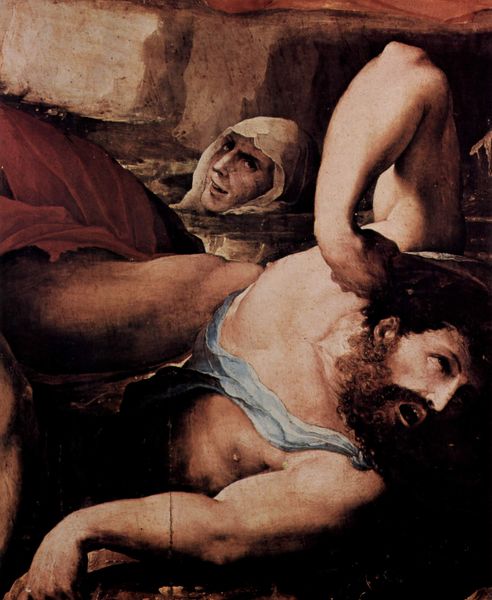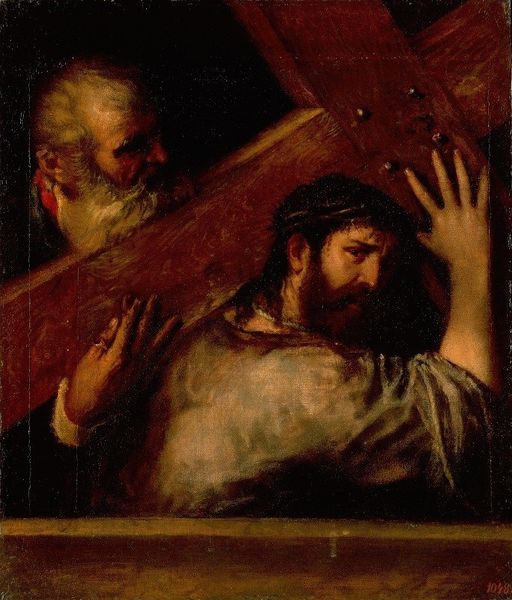
painting, oil-paint
#
portrait
#
painting
#
oil-paint
#
figuration
#
human
#
history-painting
#
italian-renaissance
#
portrait art
#
realism
Copyright: Public domain
Editor: This is Francesco Salviati's "Christ Carrying the Cross," painted around 1540, using oil. There’s a somber stillness here. How might we understand this portrait today? Curator: Let's consider the oil paint itself. In 16th century Italy, the increasing availability of materials and skilled workshops would have shaped Salviati's artistic choices. Oil allowed for layers, luminosity, and that careful realism we see. Think of the labor involved in grinding pigments, preparing the canvas, and the cultural capital tied to artistic patronage at the time. How do these production factors alter your reading of this scene? Editor: It feels like you’re pointing out the system, more than just the artistry itself. Does that reduce the impact of the suffering shown? Curator: Not reduce, contextualize. This image exists within a network of power dynamics: The Church as patron, the artist as craftsman fulfilling a commission. The consumption of such imagery was part of the ritual, tied to material displays of faith and social order. Consider the price of ultramarine blue, derived from lapis lazuli, would Christ's robe have signified status even then? Editor: So, the materials and making were intertwined with social messages, far beyond just picturing a biblical story. Curator: Precisely. Salviati isn't simply depicting Christ, he’s participating in a visual and economic culture that shapes our understanding even now. Considering materials helps reveal hidden layers of history embedded within the artwork. Editor: That gives me a whole new perspective. I was initially drawn to the expression on Christ's face, but now I am thinking about all the physical resources required for this art to exist at all. Curator: Seeing the art object as material, and the making of it as a means opens the doors to questions of labor, and patronage. These give insight to our values around both then and now.
Comments
No comments
Be the first to comment and join the conversation on the ultimate creative platform.

